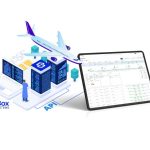Uber & the driverless trucks of the future
Freighter trucks have always been a big part of the US economy. Around 67% of freight that moves within the country are transported by freight trucks, according to the American Trucking Association. Many new technologies are also being rolled out to ease the shortage of truck drivers while maintaining trucks and highways safer.
Autonomous trucks are self-driving trucks that drive by itself for nearly 24 hours per day at a stretch without any break.
Driving a driverless truck accounts for fuel efficiency gain, as the optimal cruising speed from a fuel efficiency standpoint is around 45 miles per hour.
The potential saving to the freight transportation industry is estimated to be $168 billion annually.
The savings are expected to come from labor ($70 billion), fuel efficiency ($35 billion), productivity ($27 billion) and accidents ($36 billion), before including any estimates from non-truck freight modes like air and rail, estimates Morgan Stanley, a global financial services firm.
In addition to cost savings, fleets of automated trucks could save lives. Crashes involving large trucks killed 3,903 people in the US in 2014, according to the National Highway Traffic Safety Administration, and a further 110,000 people were injured.
More than 90% of the accidents were caused at least in part by driver error.
Uber, Otto partnership
The online transportation networking company, Uber, recently acquired the self-driving lorry startup Otto Motors for $680 million in a long-haul freight business partnership.
The purpose of buying the company is to develop an aftermath self-driving kit for freight trucks that could potentially double their utilisation, hence, increase their safety.
Lior Ron, co-founder at Otto Motors, said in a statement that Otto would expand its fleet of trucks from six to 15 and begin hauling cargo to ware-houses and stores as early as next year.
Recently, Otto revealed that its self-driving kits are intended for use only on freeways.
However, Uber is also deploying navigation, mapping and tracking technologies for truckers’ needs in its current testing phase.
Otto believes its range of high-tech tools and services can help bring down the costs involved in logistical operations and help Uber enter the $700-billion-a-year trucking industry.
Mr. Ron further notes that the company is already working to seal deals with a few shipping partners to haul all kinds of good except for hazardous materials.
That should help Uber further test its technology – and perhaps fine-tune its business models to suit the requirements of logistics companies.
“Uber has already started pitching services to shippers, truck fleets and independent drivers, and the services go well beyond Otto’s initially stated goal of outfitting trucks with self-driving technology,” Reuters reports. “It also plans to compete with the brokers who connect truck fleets and shippers.”
The technology remains under development, but with Uber’s considerable resources now on board, Ron and his team aim to begin working with warehouses and stores to partially automate the driving process and improve efficiency.
“In Uber, you press a button, and an Uber shows up after three minutes,” Mr. Ron said in a statement. “In freight, the golden standard is that it takes (the broker) five hours of phone calls to find your truck. That’s how efficient the industry is today.”
The company is fast diversifying beyond its core business of transportation. Its ‘UberEats’ food delivery and ‘UberRush’ shipping service have already done the same thing on the city-level and, according to Mr. Ron, the new goal is about “building that long-haul piece.”
Testing phase
Mr. Ron emphasises that Otto’s autonomous driving technology is still in a “testing regimen.” The trucks can drive by themselves on highways, with two co-pilots as a backup, but maneuvering off the open interstate remains a challenge.
The trucks now haul random items from the company’s garage to test how the vehicles respond to hauling weight. But the company will “fairly soon” move goods for shippers—just about any freight, except for hazardous materials, Ron said.
Otto currently has about two dozen drivers who are employees, and next year the company will have more partnerships with independent drivers. Truck fleets will also help test its technology.
Otto has had talks with potential partners and is in the process of trying to cement deals with some of them, Ron said.
“This is all about putting it on the road,” Ron said, “collecting the miles.”
About Uber
Uber is an American online transp-ortation network company worldwide, headquartered in San Francisco, California. It develops, markets and operates the Uber mobile ‘app’, which allows consumers with smartphones to submit a trip request, which the software program then automatically sends to the Uber driver nearest to the consumer, alerting the driver to the location of the customer.
As of August 2016, the service was available in over 66 countries and 507 cities worldwide. The Uber app automatically calculates the fare and transfers the payment to the driver. Since Uber’s launch, several other companies have replicated its business model, a trend that has come to be referred to as ‘Uberification’.
About Otto Motors
OTTO Motors, a division of Clearpath, provides self-driving vehicles designed exclusively for indoor material transport. The company’s OTTO line offers infrastructure-free navigation, obstacle avoidance, and dynamic path-planning, and collaboratively works alongside plant personnel. Proprietary hardware, software, and services are delivered to provide customer excellence.

















